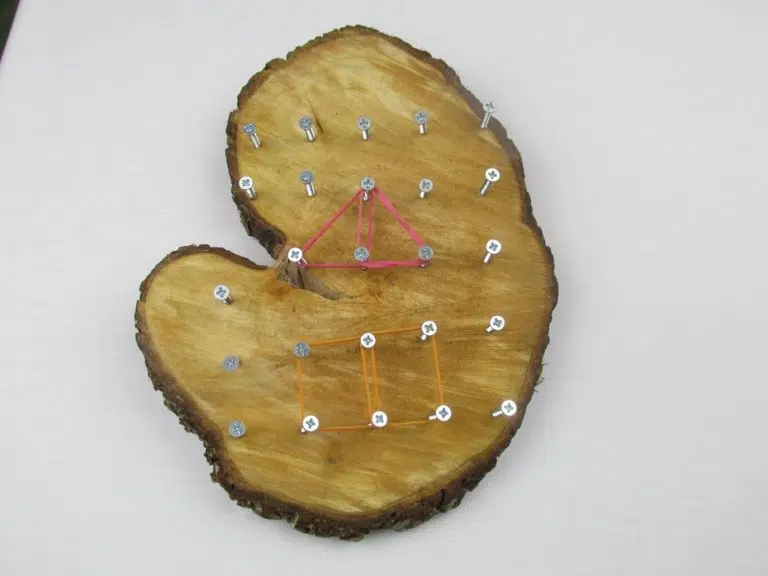Geoboards (store-bought or homemade using pieces of wood with screws)
Colored rubber bands, hair bobbles, or loom-bands
String or a marker to indicate the line of symmetry
Introduction:
Explain to the children what a geoboard is and how it can be used to create shapes.
Introduce the concept of symmetry, showing examples of symmetrical shapes and objects.
Demonstrate how a line of symmetry divides a shape into two identical halves.
Setting Up:
Give each child a geoboard and a selection of colored rubber bands.
Use a piece of string or a marker to draw a line down the middle of each geoboard to indicate the line of symmetry.
Creating Shapes:
Start by creating simple shapes (e.g., square, triangle) on one side of the line of symmetry.
Show the children how to copy these shapes on the other side of the line to make them symmetrical.
Begin with shapes that are close to the line of symmetry for easier replication.
Exploring Symmetry:
Encourage the children to create their own shapes and patterns on one side of the line and then replicate them on the other side.
Gradually increase the difficulty by creating shapes further away from the line of symmetry.
Guidance and Support:
Provide assistance and guidance as needed, ensuring children understand the concept of symmetry.
Praise efforts and creativity, even if the shapes are not perfectly symmetrical.
Reflection:
Discuss the activity with the children. Ask them to share what they created and how they made their shapes symmetrical.
Reinforce the idea that symmetry means both sides are the same, like a mirror image.
Difficulty Levels:
Preschool to Kindergarten: Focus on simple shapes close to the line of symmetry. Provide more guidance and support.
Grade 1: Introduce more complex shapes and allow the children to create shapes a little further from the line.
Grade 2: Challenge the children to create intricate patterns and shapes far from the line of symmetry. Encourage independent exploration and problem-solving.
What Happened?
Children created symmetrical shapes and patterns on geoboards, developing an understanding of symmetry.
They practiced fine motor skills and spatial awareness.
The activity provided a hands-on, engaging way to explore geometric concepts.
Explore More:
Use geoboards to explore other geometric concepts like area and perimeter.
Introduce challenges, such as creating symmetrical patterns using specific criteria (e.g., using only triangles or squares).
Combine geoboards with other symmetry activities, such as drawing symmetrical shapes or using mirrors to explore reflections.

